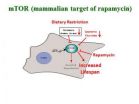(Press-News.org) A newly-discovered source of oceanic bioavailable iron could have a major impact our understanding of marine food chains and global warming. A UK team has discovered that summer meltwaters from ice sheets are rich in iron, which will have important implications on phytoplankton growth. The findings are reported in the journal Nature Communications on 21st May, 2014*.
It is well known that bioavailable iron boosts phytoplankton growth in many of the Earth's oceans. In turn phytoplankton capture carbon – thus buffering the effects of global warming. The plankton also feed into the bottom of the oceanic food chain, thus providing a food source for marine animals.
The team, comprising researchers from the Universities of Bristol, Leeds, Edinburgh and the National Oceanography Centre, collected meltwater discharged from the 600 km2 Leverett Glacier** in Greenland over the summer of 2012, which was subsequently tested for bioavailable iron content. The researchers found that the water exiting from beneath the melting ice sheet contained significant quantities of previously-unconsidered bioavailable iron. This means that the polar oceans receive a seasonal iron boost as the glaciers melt.
Jon Hawkings (Bristol), the lead author, said
"The Greenland and Antarctic Ice Sheets cover around 10% of global land surface. Iron exported in icebergs from these ice sheets have been recognised as a source of iron to the oceans for some time. Our finding that there is also significant iron discharged in runoff from large ice sheet catchments is new. "
"This means that relatively high iron concentrations are released from the ice sheet all summer, providing a continuous source of iron to the coastal ocean"
Iron is one of the most important biochemical elements, due to its impact on ocean productivity. Despite being the fourth most abundant element in the Earth's crust, it is mostly not biologically available because it is largely present as unreactive minerals in natural waters. Over the last 20 years there has been controversy over the role of iron in marine food chains and the global carbon cycle, with some groups experimenting with dumping iron into the sea in order to accelerate plankton growth – with the idea that increased plankton growth would capture man made CO2. This work indicates that ice sheets may already be carrying out this process every summer.
Based on their results the team estimates that the flux of bioavailable iron associated with glacial runoff is between 400,000 and 2,500,000 tonnes per year in Greenland and between 60,000 and 100,000 tonnes per year in Antarctica. Taking the combined average figures, this would equal the weight of around 125 Eiffel Towers, or around 3000 fully-laden Boeing 747s being added to the ocean each year.
Jon Hawkings added;
"This is a substantial release of iron from the ice sheet, similar in size to that supplied to the oceans by atmospheric dust, another major iron source to the world's oceans.
At the moment it is just too early to estimate how much additional iron will be carried down from ice sheets into the sea. Of course, the iron release from ice sheet will be localised to the Polar Regions around the ice sheets, so the importance of glacial iron there will be significantly higher. Researchers have already noted that glacial meltwater run-off is associated with large phytoplankton blooms - this may help to explain why".
Commenting on the relevance of this study, Professor Andreas Kappler (geomicrobiologist at the University of Tübingen, Germany, who is also secretary of the European Association of Geiochemistry) said:
"This study shows that glacier meltwater can contain iron concentrations that are high enough to significantly stimulate biological productivity in oceans that otherwise are oftentimes limited in the element iron that is essential to most living organisms. Although the global importance of this flux of iron into oceans needs to be quantified and the bioavailability of the iron species found should be demonstrated experimentally in future studies, the present study provides a plausible path for nutrient supply to oceanic life."
INFORMATION:
This press release is based on the following paper: Ice sheets as a significant source of highly reactive nanoparticulate iron to the oceans. Authors Jon R. Hawkings, Jemma L. Wadham, Martyn Tranter, Rob Raiswell, Liane G. Benning, Peter J. Statham, Andrew Tedstone, Peter Nienow, Katherine Lee & Jon Telling NATURE COMMUNICATIONS | 5:3929 | DOI: 10.1038/ncomms4929, published 21 May 2014
Study shows iron from melting ice sheets may help buffer global warming
2014-05-21
ELSE PRESS RELEASES FROM THIS DATE:
More maternal mental health surveillance is needed, suggests new study
2014-05-21
Maternal depression is more common at four years following childbirth than at any other time in the first 12 months after childbirth, and there needs to be a greater focus on maternal mental health, suggests a new study published today (21 May) in BJOG: An International Journal of Obstetrics and Gynaecology.
The study using data from 1507 women from six public hospitals in Melbourne, Australia, examines the prevalence of maternal depression from early pregnancy to four years postpartum. The researchers identify the possible risk factors for depressive symptoms at four ...
Molecule linked to aggressive pancreatic cancer offers potential clinical advances
2014-05-21
JACKSONVILLE, Fla. — Mayo Clinic researchers have discovered an enzyme they say is tightly linked to how aggressive pancreatic cancer will be in a patient.
They say the study, published in Molecular Cancer Research, provides key insights into the most aggressive form of the disease, which is one of the deadliest human cancers.
It also offers a number of possible future clinical advances, such as a way to gauge outcome in individual patients, and insight into potential therapy to shut down activity of the enzyme, known as Rac1b.
"The implication from our research is ...
A quicker way to determine who's faking it on the Internet
2014-05-21
Researchers at the University of Montreal have developed an improved chemical analysis method that is more efficient and faster in detecting counterfeit medicines, which have skyrocketed in recent years. The method was developed and tested in a study by Philippe Lebel, Alexandra Furtos and Karen Waldron of the university's Department of Chemistry. It identifies and quantifies the various compounds present in a pharmaceutical product, in a fifth of the time it takes governmental services to do the same job. "Fake drugs are a scourge for public health," says Lebel. Once a ...
Compound reverses symptoms of Alzheimer's disease in mice, SLU research shows
2014-05-21
ST. LOUIS -- A molecular compound developed by Saint Louis University scientists restored learning, memory and appropriate behavior in a mouse model of Alzheimer's disease, according to findings in the May issue of the Journal of Alzheimer's Disease.
The molecule also reduced inflammation in the part of the brain responsible for learning and memory.
The paper, authored by a team of scientists led by Susan Farr, Ph.D., research professor of geriatrics at Saint Louis University, is the second mouse study that supports the potential therapeutic value of an antisense compound ...
Vitamin E in canola and other oils hurts lungs
2014-05-20
CHICAGO --- A large new Northwestern Medicine® study upends our understanding of vitamin E and ties the increasing consumption of supposedly healthy vitamin E-rich oils -- canola, soybean and corn – to the rising incidence of lung inflammation and, possibly, asthma.
The new study shows drastically different health effects of vitamin E depending on its form. The form of Vitamin E called gamma-tocopherol in the ubiquitous soybean, corn and canola oils is associated with decreased lung function in humans, the study reports. The other form of Vitamin E, alpha-tocopherol, ...
Researchers test whether Red Queen hypothesis makes species resilient
2014-05-20
In Lewis Carroll's 1871 classic novel Through the Looking Glass, the Red Queen tells Alice: "Now, here, you see, it takes all the running you can do, to keep in the same place."
Over the years, evolutionary biologists have used the Red Queen's statement to refer to the "Red Queen" hypothesis, which describes how living organisms, including humans, manage to survive in a changing environment by adapting through sexual reproduction. According to a University of Iowa researcher, the hypothesis is supported.
In a paper published in the journal Biology Letters, lead author ...
Shale development generally helps local government coffers
2014-05-20
Oil and gas development from shale fields has generally helped the public finances of local communities, providing new revenues and resources that usually -- but not always -- outweigh the increased demand for public services and other costs, according to a new analysis from two Duke University researchers.
Daniel Raimi and Richard Newell gathered data from communities surrounding 10 oil and gas "plays" from September 2013 through February 2014, traveling to Arkansas, Colorado, Louisiana, Montana, North Dakota, Pennsylvania, Texas and Wyoming to interview local officials ...
'Supermodel' mouse reveals mechanisms that regulate metabolism, researchers find
2014-05-20
DALLAS – May 20, 2014 – A lean "Supermodel" mouse type has revealed the potentially critical role played by a largely unknown gene that regulates metabolism, findings that could provide new insight into diseases ranging from diabetes to obesity, a new study by UT Southwestern Medical Center researchers suggests.
The Supermodel mouse's phenotype – the physical characteristics that result from its gene makeup – include being very small in size, with an unusual body form caused by abnormal distribution of fat, said Dr. Zhe Chen, Assistant Professor of Biophysics, and ...
Research explains action of drug that may slow aging and related disease
2014-05-20
CORVALLIS, Ore. – A proven approach to slow the aging process is dietary restriction, but new research in the Linus Pauling Institute at Oregon State University helps explain the action of a drug that appears to mimic that process – rapamycin.
Rapamycin, an antibiotic and immunosuppressant approved for use about 15 years ago, has drawn extensive interest for its apparent ability – at least in laboratory animal tests – to emulate the ability of dietary restriction in helping animals to live both longer and healthier.
However, this medication has some drawbacks, including ...
Shrub growth decreases as winter temperatures fluctuate up
2014-05-20
Many have assumed that warmer winters as a result of climate change would increase the growth of trees and shrubs because the growing season would be longer. But shrubs achieve less yearly growth when cold winter temperatures are interrupted by temperatures warm enough to trigger growth.
"When winter temperatures fluctuate between being cold and warm enough for growth, plants deplete their resources trying to photosynthesize and end the winter with fewer reserves than they initially had. In the summer they have to play catch up," said Melanie Harsch, a University of Washington ...





